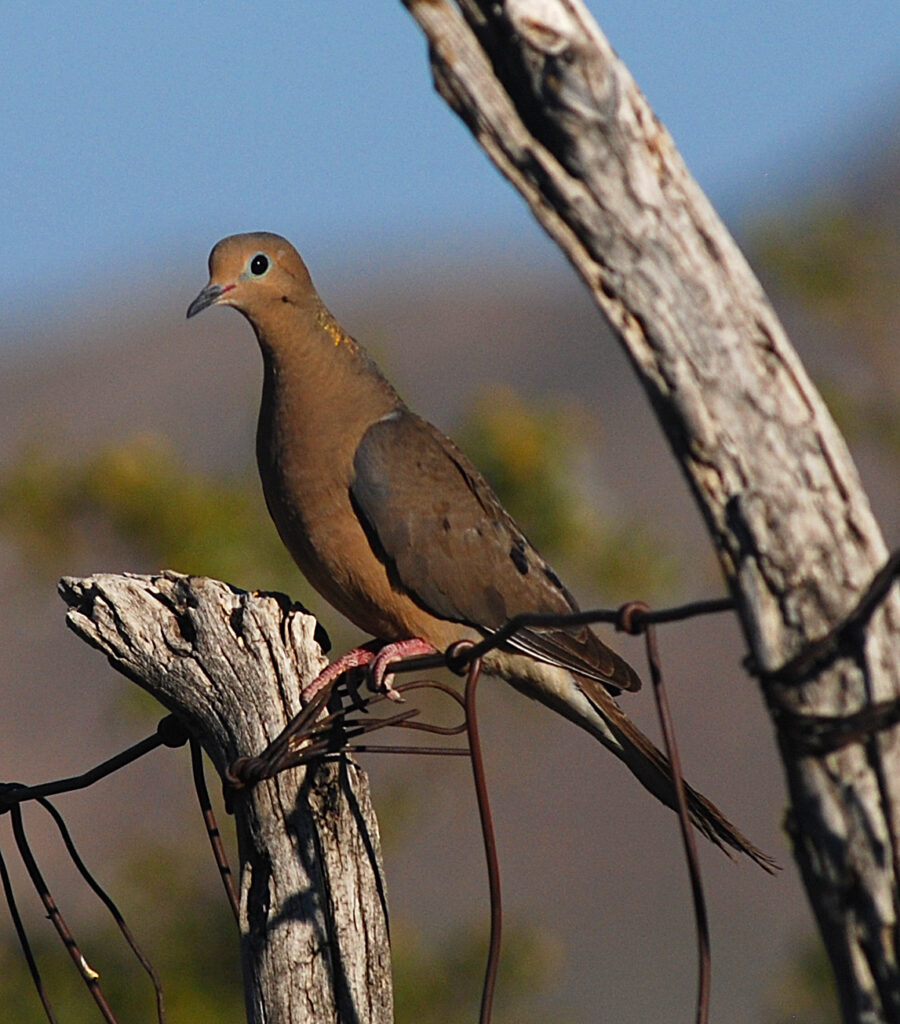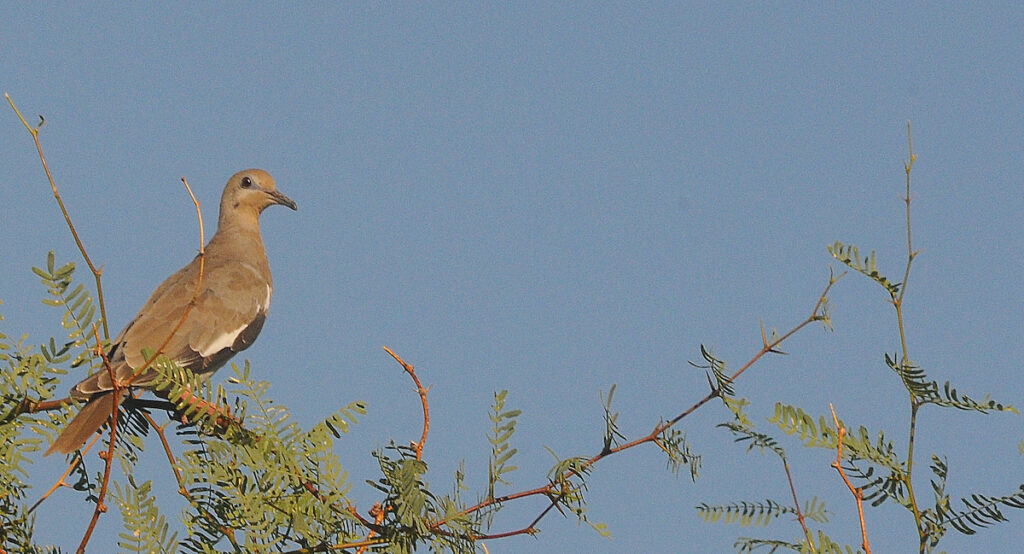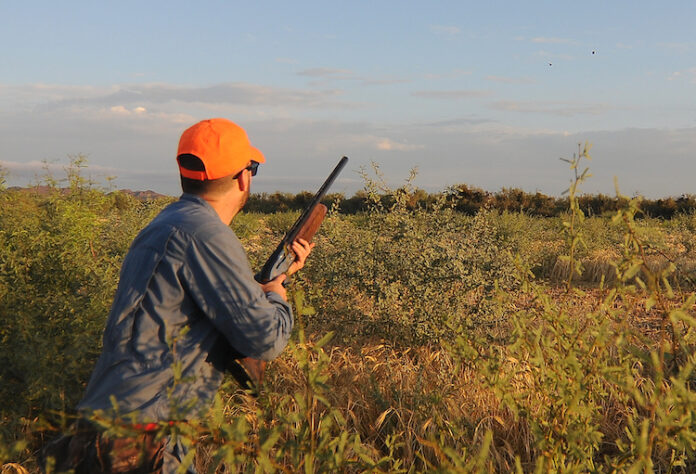BY JIM MATTHEWS
Doves are one of the most populous birds in North America and beginning Sunday, September 1, hunters from across the nation took to the field in the largest single opening day event in hunting. In fact, it may be the biggest participatory event of all sports. Over 625,000 hunters across the nation will hunt doves opening day.
Dove season opened simultaneously in the 38 states that have a season, and more shotgun ammunition will be expended during the opening weekend of this season than will be shot at all other game birds combined for the rest of the fall. It is an American tradition that has its roots in the Constitution, individual freedoms, and public ownership of the nation’s wild game. Nowhere are we closer to our historic roots than with a shotgun in our hands hunting fast-flying doves on opening day, and for most of us, it marks the beginning of fall hunting seasons that will last into January. The anticipation that has been building up for months is finally unleased.
The U.S. Fish and Wildlife Service estimates there were approximately 8.25 million doves taken by hunters out of a population that is over 160 million strong this past season, in the annual mourning dove population status report just published this month. Numbers and harvest are likely to be better this season thanks to a strong hatch, especially in the West.
FINDING BIRDS
Finding concentrations of doves is what scouting is all about. With the opening day on Friday before Labor Day weekend. It will be a four-day event for many hunters this year, and scouting is essential to find fields and flyways used by doves. Many of the spots and fields are used year after year by the doves, and it usually doesn’t take to long for dove veterans to find good places to hunt.
Feeding Areas: Most Southern California hunters focus their hunting on agriculture, and crops determine bird usage. Grain and seed crops attract the most doves. These fields are simple to find by driving the network of roads in our desert farm lands. More and more fields are posted, but there are maps to public hunting fields in the Imperial Valley and Blythe regions. Most state wildlife areas and ecological reserves have hunting areas just for doves across the state, not just in the two popular region. If you are not hunting a public field, you might be about to talk to a landowner to get permission to hunt their lands, but those days are mostly gone in California.

Finding Flyways: Birds often roost miles away from where they feed. In the Imperial Valley and along the Colorado River there are three areas where birds roost: citrus orchards, in willow and cottonwood thickets along rivers and canals, or in “forests” of desert palo verde, mesquite, and ironwood trees. Sometimes the birds roost along two to three miles of desert wash. The good news is that each morning and evening, these birds end up in little clusters flying up and down this roost wash to their feeding areas.
Flyways between feeding areas and roost areas are what you are seeking. Usually roost and flyway areas remain the same even when feeding areas change. So when you find a good flyway, it is a place that can produce year after year. Also remember that dove flyways always follow washes, water courses (streams, canals, and shorelines of lakes), power lines, roads, low bluffs or ridgelines, railroad tracks, and tree lines. Finding a good flyway is a way to get away from the crowds around feeding fields.
Flyways are harder to find than fields with doves. Start at the heavily used field and work backward. Watch where birds enter the field and then move that way. It is best to do this kind of scouting first thing in the morning – dawn – and binoculars are an asset. It is surprising how many times most birds are entering and leaving a feeding area from the same direction. They might mill around and fly in all directions when feeding, but when traveling, they usually have a destination in mind.
Water: Doves, as with most game birds, need to water every day. When it is hot, most doves water once or twice in the morning or early afternoon. They water during and after feeding, and then again in the evening just before going to roost. In some places, water is available nearly everywhere and the doves don’t need to go far to get a drink. But they do seem to concentrate on certain spots along water sources. Those spots are usually good year after year. Hunting isolated watering spots in the desert is a common practice throughout the Southwest, but less so in California because desert water is so scarce. All the birds in an area come to these spots throughout the morning, and then there is a flurry of activity just as the sun is setting.
Hunters in the California desert need to remember they can NOT sit on an isolated desert water source (spring, stock tank, or guzzler) for more than 30 minutes. You WILL get a citation. You (and any vehicles) also have to be at least 200 yards away from the water source if you plan to stay longer than 30 minutes. This is so wildlife can come into the water and drink. This is especially critical dove opener when the temperatures are so high. The game has to be able to come in and drink.

AMMUNITION AND DOVE TIPS
Non-Lead Dove Loads: Since there can be a lot of shooting on dove hunts, most hunters seek out bargain shotgun shells for doves, but the non-lead requirement for all hunting in California has about ended the days of $5 or $6 a box shells. Even bargain steel loads are likely to be a $12 or $15 or more.
Most hunters will not be able to tell much difference between the steel loads and the lead loads they’ve shot in the past. The steel may pattern a little tighter than the lead, and you will want to shoot one size larger shot in steel than you shot in lead – in other words No. 6 and 7 steel for doves is about the same at 7 1/2s or 8s in lead. A 7/8s or 1-ounce load of steel 7s will have about the same number of pellets as the same pay load in lead 8s. That means pattern density will be similar. You will want to shoot higher velocity steel loads so pellet energy is carry out equivalent distances. Because steel is lighter than lead, the extra speed will give you pellet energy that makes 35 and 40 yard-shots doable.
Field Safety: Dove season sees more hunters getting pelted with shot than any other hunting season, sometimes even with injuries requiring a trip to the hospital. Crowded hunting areas and careless hunters are to blame for the accidents. The dove hunting rules of safety are really pretty simple. Never shoot low-flying birds, especially if there are other hunters across from you less than 1/4-mile away or less. Corners of fields are the dangerous points when hunters ring the field and extra caution is needed there. Always wear eye protection when dove hunting and make its best if the sunglasses or shooting glasses wrap around so there is eye protection from the side, too. If you hunt in crowded areas, you will have pellets rain down on you, but those pellets are harmless. Wearing a billed or brimmed hat will keep those pellets out of your eyes.
Decoys: Doves are suckers for decoys. Perhaps more so than just about any game bird. They see other doves and they figure there must be something of importance there. Static decoys or moving wing decoys are all good, but the moving wing decoys can be seen from greater distances by the birds.
Windy Day Tip: It seems like every year during the dove season, there are at least one or two days when the wind howls, especially in the afternoons. On those days, doves seem to concentrate in protected flight paths. River bluffs, wind and shelter breaks of planted trees or shrubs, and even railroad berms. The doves fly on the lee side of these wind breaks and concentrate more than normal in these flyways.
Jump-Shooting Doves: Most dove hunting is a sedentary sport, where you sit on stools or stand by cover and let the birds come to you. However, you can jump-shoot doves in desert areas just like quail, especially where they are dispersed across an area of good feed (sunflowers, for example). Natural feed is more scattered, allowing doves to be spread over a wide area, and jump-shooting is a good option. There are not big flights of birds moving around, and you need to get out there and push the birds.
Following these tips and advice will help make you a better dove hunter.
END




